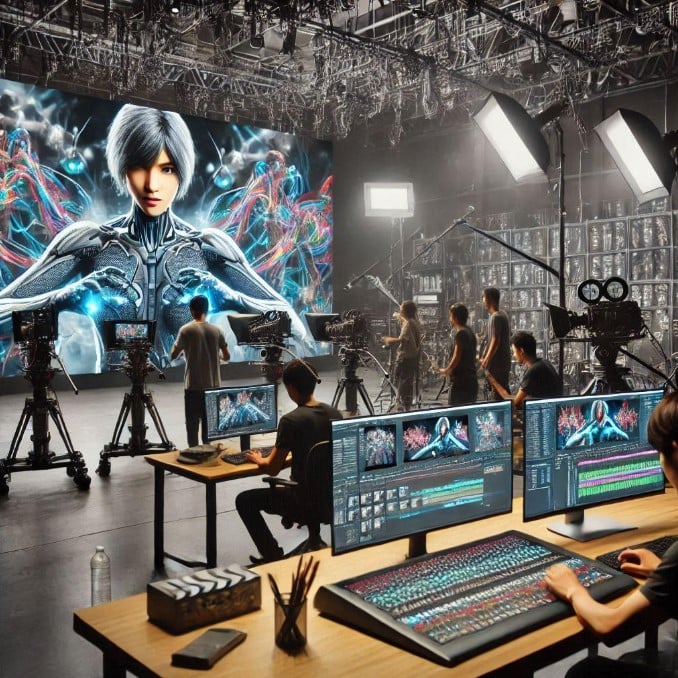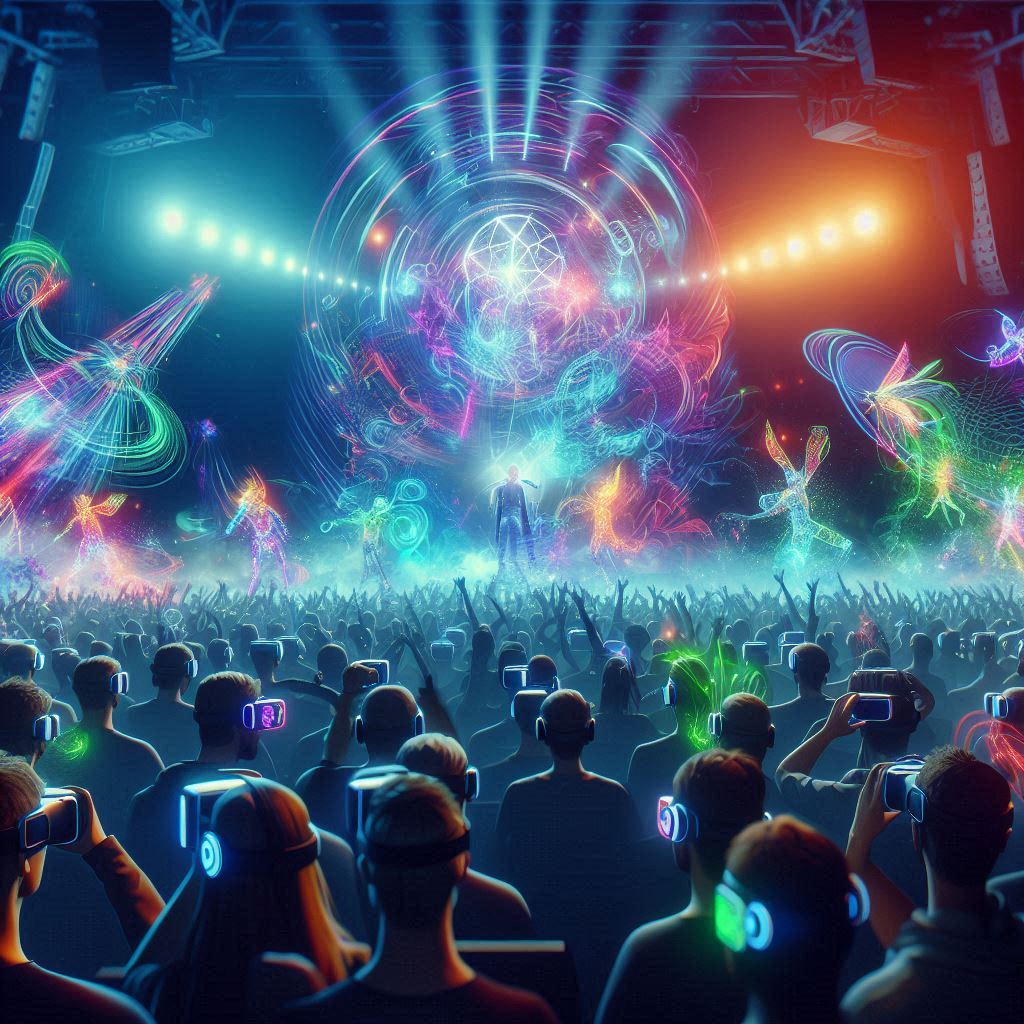Introduction
The media and entertainment industries are evolving with the use of computer vision. This change is enabling computers to analyse and understand images and videos. This technology transforms workflows, making them faster and more intelligent.
For instance, Netflix leverages image recognition and machine learning to create personalised thumbnails. These tailored visuals help users discover shows they enjoy, improving their viewing experience. Projections show that the global media and entertainment industry will exceed $3.4 trillion in revenue by 2028. This growth highlights great opportunities and the need for new innovations (The Future of Commerce, 2024).
This transformation is powered by advanced technologies such as artificial intelligence (AI), generative AI, GPU acceleration, and IoT edge computing. Together, these innovations enable computers to process vast amounts of visual data at remarkable speeds.
Whether it’s editing videos or recommending content, computer vision technology plays a central role in modern media. It’s changing how we watch, create, and share entertainment, shaping a future where technology enhances creativity and convenience.
Real-World Applications of Computer Vision in Content Creation

Automated Content Creation
Computer vision technology is changing the game in content creation. It helps tools create AI-generated movie scenes and enhance animations. These systems, powered by deep learning algorithms, allow movies to edit themselves, reducing manual effort and accelerating production. Deepfake technology exemplifies this advancement, as it is now used to seamlessly dub films into different languages or replace actors with uncanny precision.
Generative AI plays a pivotal role in creating hyper-realistic visuals, designing animated characters, and enhancing existing scenes. These tools are changing how movies and shows are made. They help create imaginary worlds and improve creative workflows. This leads to more innovation and efficiency in making content.
VFX and CGI Enhancements
Computer vision systems are also indispensable in the world of visual effects (VFX) and computer-generated imagery (CGI). Blockbuster films like Avengers: Endgame demonstrate how live-action footage and CGI can be seamlessly integrated to create stunning, realistic visuals. This process relies on feature extraction to fine-tune visual information, producing action-packed sequences that captivate audiences.
GPU acceleration plays a vital role in achieving these results, enabling studios to speed up rendering times and refine visuals in real time. By combining technological innovation with artistic vision, filmmakers can push creative boundaries, bringing their boldest ideas to the screen.
Read more: AI in Digital Visual Arts: Exploring Creative Frontiers
Live Broadcasting and Sports Analysis

Object Tracking for Real-Time Analytics
Object tracking has revolutionised sports broadcasting by providing real-time analytics during games. Broadcasters can track players and ball movement in sports like football or basketball, delivering a more immersive viewer experience. Systems like Hawk-Eye, used in cricket and tennis, utilise AI to classify objects and analyse video frames, offering precise insights into player performance and game dynamics. This technology helps referees make accurate decisions and ensures fans enjoy enhanced coverage.
Image Processing for Instant Replays
GPU-powered image processing elevates the quality of instant replays, particularly during controversial moments in sports. By leveraging advanced computing resources, broadcasters can enhance video clarity in real time, ensuring that every detail is visible. This not only aids in critical referee decisions but also enriches the audience’s experience, making each play memorable and engaging.
Read more: Augmented Reality (AR) in Sports: Changing the Game
User Experience and Personalisation
Social Media Filters and AR
Social media platforms like Snapchat and Instagram use advanced facial recognition technology to power augmented reality (AR) filters. These filters rely on deep learning models to detect and classify facial features such as eyes, noses, and mouths.
The precision of pattern recognition enables dynamic AR overlays, keeping users entertained with innovative and engaging content. This technology has become a cornerstone of modern social media, driving user interaction and satisfaction.
Personalised Recommendations
Machine learning models and image processing technologies power personalised recommendations, tailoring suggestions for films, clothing, and products to individual preferences. By analysing visual information and user data, these systems ensure that customers receive relevant and engaging recommendations. This not only enhances customer service but also improves the overall user experience, making interactions seamless, efficient, and enjoyable.
Read more: How Artificial Intelligence Transforms Social Media Today
Streamlining Production and Inventory Management
IoT Edge Computing for On-Set Productions
Film crews now use IoT edge computing to make quick decisions on movie sets. This technology processes input images instantly, helping directors adjust lighting, move props, and set camera angles perfectly.
For example, IoT systems can automatically move cameras based on where objects are placed. This saves time and uses computing resources more efficiently, keeping productions on schedule.
Managing Props and Costumes
Managing costumes and props used to be a slow and time-consuming job. Optical character recognition (OCR) has changed that. Studios now use OCR to create digital records of costumes and props.
For example, the Star Wars team has catalogued decades’ worth of visual information, making it easy to track items. This technology improves inventory management, saving time and ensuring every item is organised for future use.
Enhancing Audience Engagement Through Immersive Experiences

AR and VR for Interactive Storytelling
AR and virtual reality (VR) are changing how people experience stories. Virtual concerts, like Travis Scott’s performance in Fortnite, are great examples. These events use AI-powered AR and VR systems to create experiences that feel real. IoT edge computing ensures everything runs smoothly, with no delays, keeping fans engaged.
The growing demand for ultra-high-definition content (4K and 8K), driven by AR and VR, underscores the potential of these technologies to revolutionise audience engagement (Digital Mate, 2024).
Video games are also using AR and VR to create exciting stories. These games let players explore virtual worlds that adapt to their actions, making every play unique. Beyond gaming, AR and VR bring new ways to tell stories, such as virtual tours and interactive movies. These tools let creators mix real and imaginary elements to make unforgettable experiences.
Gamification with Computer Vision
Gamification uses computer vision to make entertainment more interactive. Imagine watching a movie where your facial expressions change the story. Computer vision systems can classify objects like smiles or frowns from a video frame, turning storytelling into a two-way experience.
One example is Black Mirror: Bandersnatch, where viewers could make decisions that shaped the plot. This concept uses the human brain creatively, making entertainment more exciting. Social media platforms also use gamification to add interactivity, creating dynamic and personal experiences. This future of storytelling allows people to do more than watch—they can take part in the story.
Read more: Level Up Your Gaming Experience with AI and AR/VR
Tackling Industry Challenges with Computer Vision
Automating Compliance Monitoring
Media companies must ensure their content follows rules and regulations. AI-based computer vision technology makes this easier. These systems use deep learning algorithms to scan videos and images for sensitive material. They flag anything that breaks the rules, helping companies meet global and regional standards.
Computer vision systems powered by AI streamline this process by identifying sensitive material and automating classification. This minimises manual review, cutting down time-consuming tasks by up to 70% (Media Production Technology Market Research Report, 2024).
For example, machine learning tools can find inappropriate content before it is published. This keeps content safe and ensures it meets guidelines. Automating compliance monitoring saves time and resources, allowing media companies to focus on creating great content.
Addressing Piracy with Image Recognition
Piracy is a big problem in the entertainment world, but image recognition can help solve it. Computer vision systems, enhanced with optical character recognition, can identify pirated content by analysing video frames. This prevents unauthorised material from spreading online.
YouTube’s Content ID System is a great example. It uses image recognition to detect copyrighted material and stop piracy. This technology protects creators and ensures content remains authentic on platforms like social media. By using these tools, the industry can fight piracy and support creators’ rights.
Read more: Facial Recognition in Computer Vision Explained
What TechnoLynx Can Offer to Media Innovators
TechnoLynx provides cutting-edge solutions to empower media innovators in a rapidly evolving industry.
End-to-End Computer Vision Solutions
We specialise in computer vision work, enabling computers to perform complex tasks such as image recognition, object tracking, and more. Our custom tools are designed to meet the specific needs of media professionals.
Generative AI Expertise
Our expertise in generative AI allows us to design AI models tailored to media challenges, from facial recreation to creating hyper-realistic visuals. These innovations streamline workflows and enhance creative possibilities.
GPU and IoT Integration
By integrating GPU acceleration and IoT, we optimise workflows for both live production and post-production. Powered by deep learning models, our solutions ensure efficiency and precision, helping creators stay ahead in a competitive landscape.
Conclusion
Computer vision technology is revolutionising the media and entertainment industry, empowering creators to automate workflows, enhance audience engagement, and tackle complex challenges. From using generative AI for hyper-realistic visuals to employing image processing and object tracking for seamless production, these advancements redefine what’s possible in entertainment.
Partner with TechnoLynx to stay at the forefront of innovation. Let us help you transform your vision into reality with state-of-the-art computer vision systems that captivate and inspire. The future of media is here—embrace it with TechnoLynx.
Continue reading: Harnessing AI for Next-Level Cinematography
References
-
Digital Mate. (2024, November 18). Top Media Production Trends to Watch in 2025. Digital Mate. Retrieved January, 2025.
-
The Future of Commerce. (2024). Media and entertainment trends 2025: Big pivots, new tech propel the industry forward. The Future of Commerce. Retrieved 2025.
-
Here Now. (2024, December 12). 100+ Essential Video Marketing Statistics (2025). Here Now. Retrieved January, 2025.
-
Media Production Technology Market Research Report. (2024). Future Data Stats. Retrieved 2025.












